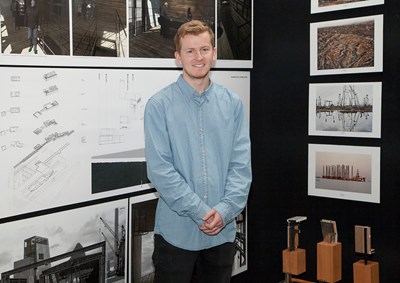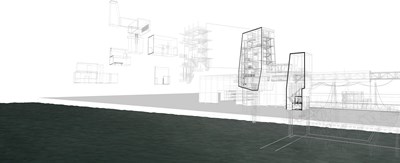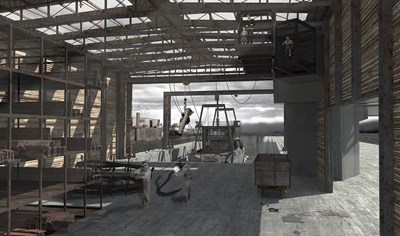Highly commended: Nathan Swaney
Extraction Lands and the Permanence of Production by Nathan Swaney, University of Auckland School of Architecture and Planning.
This design forms part of a wider discussion on how we have become reliant on the landscapes that provide for us. In extraction lands – our oil fields, mines and quarries – what role does architecture play once the land it is built on has been mined to extinction?
In the context of Taranaki, the extraction of oil and gas puts the port town of New Plymouth on a finite timeline, constantly bringing the end of industry closer with each gallon pumped. The design for a shipbreaking yard and seafarer’s centre has three main aims: it seeks to find alternative futures for the machinery once used in this process of extraction from the earth – the inclusion of a shipbreaking yard is a direct response to the process of continual production; it serves to recycle some of the material produced by extraction efforts; it attempts to bridge the transient and disconnected operations of a reclaimed wharf site back to the local community of New Plymouth.
The Seafarer’s Centre and Shipbreaking Yard becomes part of the local context, through both material and use. While the building is a collated history of material and componentry, the use of it as a seafarer’s centre caters to all means of occupation, whether you are merely passing through, are a local or work there.
Citation
Offshore oil and gas rig hardware, salvaged and recycled as a ship-breaking yard, is this project’s guiding idea. The scope is expansive and heroic. The themes of industrial decay and rebirth – as well as waterfront habitation – are convincingly juxtaposed.






